Urgent need for nonpartisan Brown transport plan
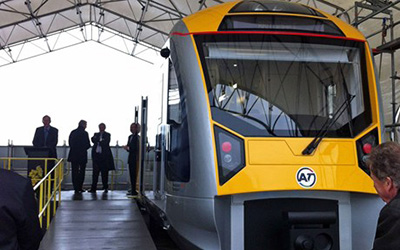
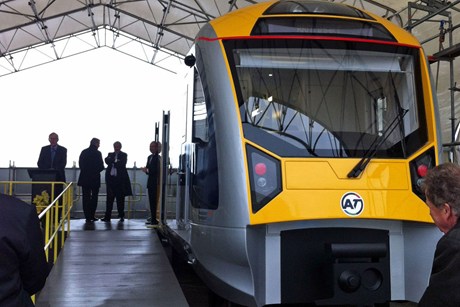
When It’s Okay to Mock: The 53 three-car Spanish-built electric trains on order will transform urban rail in the metropolis, but whether Aucklanders will judge that this mock-up, which is all there will be on show come election time, is sufficient progress on the mayor’s main 2008 election plank, will only be known after 12 October next year. An additional difficulty for Mayor Brown is that for most Aucklanders rail is irrelevant—more than twice as many people use the Northern Busway. image Auckland Transport
There are mandates, and mandates. The mandate fairly claimed by the newly created Auckland Council’s inaugural mayor, Len Brown, was for building the city rail link.
However, since Len Brown’s election, a National-led government has been re-elected with, it would claim, a pro-motorway mandate. In the Auckland mayoralty election, Len Brown won 49% of the votes cast. A year later, 2011, National won 47% of the party vote. Without question, as well as the two-percentage-point better result, Brown’s mandate for city rail was more specific than National’s, for its anything-but-rail manifesto.
So rather than delivering the beginnings of a comprehensive urban rail system, central government reticence, and the reality of long-term global economic recession, have conspired to leave Len Brown facing an election next year with little more to show for his flagship project than a mock-up of one of the 57 electric trains on order from Spain.
It could be that the metropolis has had a lucky escape. Aside from estimates nearly doubling to near $3 billion, and a route that already begins at a elevation already 11 metres below sea level, the Auckland Plan’s transport strategy is firmly rooted in a earlier era—that of Sir Dove-Myer Robinson. And while there is absolutely no doubt the city would have been healthier economically and environmentally had Sir Dove-Myer’s plans for rapid rail not been sunk, also by the government of the day, there are options available today that couldn’t have been dreamt of in 1969.
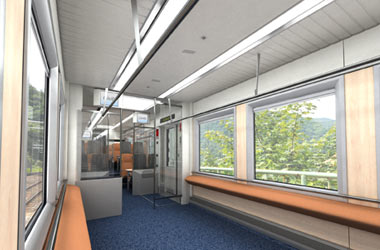
Standard Gauge Standing Room: Were Aucklanders receiving standard units produced by Construcciones y Auxiliar de Ferrocarriles build for the international gauge of 1.435 metres, they would be enjoying a great deal more elbow room for their half-billion dollars. The 1870 decision to go narrow gauge taken by Julius Vogel’s government proved to be less farsighted than his subsequent novel, predicting women in places of power. The petty actions of politicians continue to plague transport—ex transport minister Steven Joyce inflicted on Aucklanders a ticketing system favoured by his powerful Wellington transport industry friends, which is proving expensively resistant to integration. image Auckland Transport
Pure Advantage, formed this time last year, was only established two weeks before its membership outstripped that of the Green Party, established, effectively, 40 years ago. The recruitment rate, which had plateaued at about 6000, is now climbing again on the back of the 11 June launch of not-for-profit’s 58-page report on Aotearoa’s green growth progress, of which it is, in large part, scathing. While New Zealand’s Position in the Green Race does contain numerous examples of green growth initiatives locally and globally, increasing the energy efficiency of buildings is identified as the low-hanging fruit that should be picked first, and without delay. Domestic consumption accounts for 34% of electricity generated—a situation made worse in Christchurch by the bizarre decision to favour heat pumps, for which the ambient air is often too cold and too cold and damp to function, over low-emission wood pellet burners.
The low-hanging-fruit urban transport equivalent of domestic energy efficiency, is journey mitigation. While a percentage of people are proscribed in time and place, for example, to open retail premises at 8 am, and remain there until closing time, a significant percentage of the urban workforce, potentially, could largely avoid rush-hour transportation. For many, working remotely would present few logistical challenges. The ideal is probably to work out of a local workspace within easy walking or cycling distance of home. That, and a few shared facilities, such an ultra-fast broadband connection, an espresso machine and a pleasant area for the occasional break and opportunity to gossip or put the world to rights. Some can apparently happily work from a home workspace full time, but most miss the stimulus of going out to work and being near similarly industrious people. Periodically, company team members could physically meet, possibly over food, to rejuvenate the group dynamic that could suffer if video calls and conferences were relied upon exclusively. Aside from a drastically reduced demand for urban transport, the savings in commuting time, enterprises could significantly reduce their accommodation overheads. In other words, productivity could explode without a commensurate burgeoning of infrastructure.
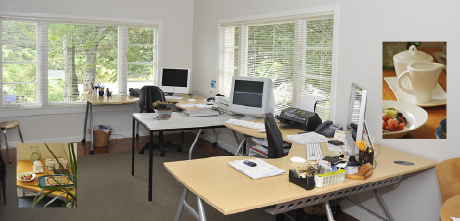
Warkworth Workspace: By moving the work to the people not the people to the work, major reductions can be made in the need for transport, public or otherwise. This promotional image for a professional workspace in Lilburn Street, Warkworth, hints at a productive yet peaceful ambiance, and the Mahurangi River beyond. image Lilburn Workspace
The only slightly higher fruit is demand-balancing through flexible working hours. Short of working from a local workspace, it would suit the metabolism of many to start and finish work earlier or later than the customary eight to five. Conversely, by working from a home workspace for an hour or two daily, the morning and evening rush hours could be avoided. Employers, so far, have generally been resistant to staff working less-rigid hours, but the promise of higher individual productivity should be considerable inducement. Mobile phone provider O2 launched a major trial in the United Kingdom in January, timed to reduce the impact of extra congestion of the transport network anticipated during the Olympics:
In terms of productivity, one of the things that comes out is that people who are flexible workers are 15–20 per cent more productive because they’re happy with the responsibility they’ve been given to get on with the work themselves.
The benefits don’t stop there. A survey by the powerful British business lobby group CBI reports that:
Firms cite a range of positive spin-offs from improved employee relations (74%), boosting recruitment and retention (61%) … and lower absence rates (38%) [of firms, in each case].
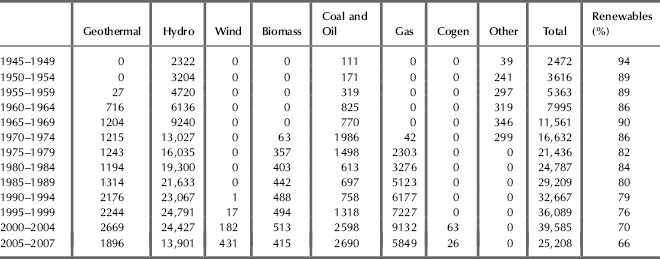
Done it Before Can Do it Again: For Auckland’s shiny new electric trains to be fossil-fuel-free, the Huntly Power Station must be phased out. Replacing Huntly’s 1448 megawatt capacity with 1 448 000 one-kilowatt domestic photovoltaic installations would cost about $10 billion—about three times the cost of nuclear and incapable of running those trains at night. Table NZED, annual statistics in relation to electric power development and operation; Ministry of Economic Development Energy Data File, June 2008
Peak public transport fares, and congestion and parking charges, could further incentivise flexible working. An easy place to start is the SuperGold card. In the Auckland region, the SuperGold card entitles superannuants and war veterans to free travel anytime after 9 am. For a city so famously hobbled by traffic congestion, this is an inexcusably profligate and inefficient use of publicly funded infrastructure, and particularly inexplicable as it is the only city in Aotearoa to not suspend the free travel entitlement between 3 pm and 6 pm.
The next most-easily reached fruit is optimising the bus system—buses, after all, are not going away. Curitiba began showing the way four decades ago, followed by notably by Bogotá. Bus rapid transport is now implemented, or in the process of being implemented in 137 cities, and move more than 22.5 million passengers per day.
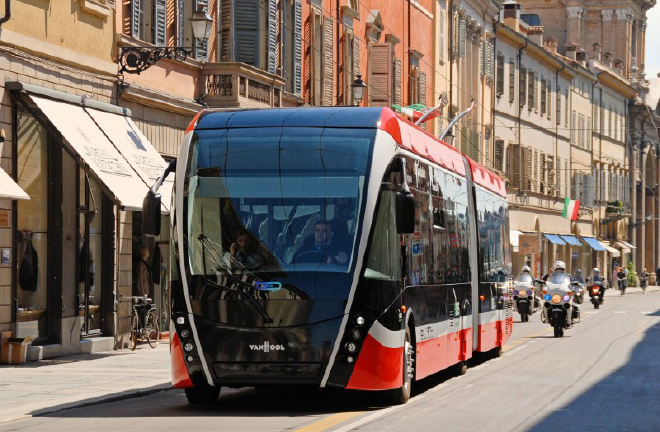
Every Which Way Flexibility: Today’s hybrid trolleybuses have flexibility undreamt of in 1977, when Auckland was beguiled by the prospect of new Mercedes buses replacing all those ugly overhead wires. Because the hybrids can run on battery alone, not only do intersections not require the thick web of overhead catenary, dislocated-pole gridlock, or stranding due to power outages, is a thing of the past. Parma’s nine new trolleybuses are due to go into service in September. image HyER
Peak public transport fares, and congestion and parking charges, could further incentivise flexible working. An easy place to start is the SuperGold card. In the Auckland region, the SuperGold card entitles superannuants and war veterans free travel anytime after 9 am. For a city so famously hobbled by traffic congestion, this is an inexcusably profligate and inefficient use of publicly funded infrastructure, and particularly inexplicable as it is the only city in Aotearoa to not suspend the free travel entitlement between 3 pm and 6 pm.
While this represents a dramatic mitigation of potential private vehicle fossil-fuel use, the knowledge that the fuel predominantly burned by buses is cancer-causing diesel leaves many convinced that electric trains are urban transport’s only true way. But not so; two tested alternatives are available that are emission-free, at least at street level—fossil-fuel-free electricity generation in Aotearoa has slipped from 94% in the 1940s to between 74% and 79% (depending upon rainfall in hydroelectricity catchments). That, however, is an issue that can readily be reversed by simultaneously stepping up the use of pellet-burning water and space heating, of solar water heating, and ceasing the staggeringly extravagant practice of using valuable on-demand generation capacity for the base-load task of the egregiously greenhouse-gas-emitting electro-smelting of imported alumina.
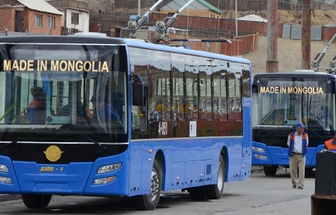
Saving a Smog-Bound Capital: While Parma waits for its upmarket trolleybuses, hybrids are already operating in Ulaanbaatar. When running in the city streets there are no emissions; when servicing the outskirts, no limit on where buses are routed. Ulaanbaatar, presumably, faces less of a challenge in persuading its populace to board something looking like a bus, unlike the sophisticates of western cities who would prefer death to such indignity. image UB Post
The first and most mature alternative to diesel-powered buses are trolleybuses. In their modern implementation they are quiet, and convenient, being at street level. They cost about one tenth of light rail systems, and only a fifth greater than diesel buses. But it need not be all or nothing. Hybrid trolleybuses are on order for delivery in Italy ‘mid 2012’, but appear to have been pipped to the post by Mongolia where the first two ‘duo-buses’ have just gone into service in the capital, Ulaanbaatar, which is in dire need of relief from its notorious air pollution. The flexibility of running under diesel power, independent of overhead lines opens up opportunities, for example, for buses running significantly on busways, where overhead electrification would receive high usage.
The other attractive feature of the hybrid trolleybus is its ability to negotiate intersections without desperately clinging to the correct segment of the ugly catenary spider webs that festooned city cross roads:
Vossloh Kiepe’s current-collector systems allow a variety of functions. Pressing a button permits the driver from his seat to pneumatically lower, centre position and mechanically lock the poles to the roof of the vehicle. Also possible is the fully automatic connection of the poles to the overhead wires. An internal control system informs the driver about the position of the system.
Delays caused to other road users, while hapless drivers braved the weather and high-voltage direct current to manually reposition a dislocated pole, added to the enthusiasm for Aucklanders to embrace their exciting new Mercedes diesel buses.
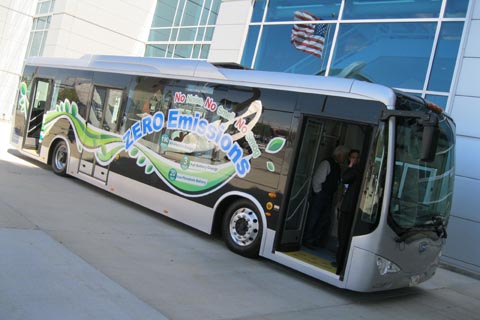
Beating the Cars: Given that weight is the enemy of the electric vehicle, it is initially surprising that buses have proved to be the breakthrough application. Chinese designed and built eBuse-12s have clocked up more than 3.2 million kilometres in Shenzhen alone, and are being trialled in Finland. image EV World
Surprisingly perhaps, considering the painfully slow rate of progress with battery-powered cars, electric buses have hit their straps. China’s battery manufacturer BYD, which is 20% owned by warren Buffet, already has its slick eBUS-12 operating in four Chinese cities, with buses in Shenzhen alone having clocked up more than 3.2 million kilometres. The eBUS-12 is also about to be trialled in the Finnish capital, although with Shenzhen announcing it will add 1000 BYD-built buses to its fleet, it would appear there is little to be trialled, except of course the performance of the lithium iron phosphate batteries used, in the rather colder Helsinki climate. The buses have a range, in ‘urban conditions’ of 250 kilometres, and can be recharged in three hours.
The Proterra all-electric bus, however, takes an astoundingly brief 10 minutes to recharge. Designed and built from the ground up in South Carolina with funds from President Barack Obama’s green stimulus package, the Proterra can run night and day without having to return to a depot, with a few five-minute pauses in the scheduled for recharging and driver changes, while passengers can also disembark and board.
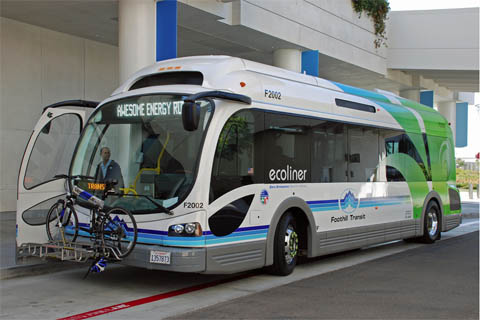
Too Little But Not Too Late: Had the United States made a similar proportion to South Korea of its stimulus package green—79% as compared to just 12%—it would have many more Proterra-like success stories to tell. The standout feature of the lightweight, battery-driven, bus is its ability to be recharged in less than ten minutes. image Foothills Transit
The ability to recharge rapidly has particular application to hilly cities. Shenzhen expediently flattens its landscape ahead of urban development, so the eBUS-12’s 250-kilometre range would likely whither on many routes in the Auckland region. Part of the Proterra’s success is due to its lightweight balsa-cored fibreglass construction. It is possibly instructive, however, that the Proterra has gone into service first in San Joaquin Valley, which is naturally flat terrain. If the Proterra approach was to be applicable to the Auckland region, it might need to utilise at every stop, at least when climbing, the induction charging system used in Turin. But again, the electric buses there service the flat city centre, as opposed to the adjoining hills.
With the supreme imperative, in the design of battery-powered vehicles, being weight minimisation, it is probable that the world’s most sophisticated proponent of lightweight bus bodies, potentially, would be Warkworth-based company Core Builders Composites—when the company’s general manager Tim Smyth doesn’t have his hands full helping to design world-leading fossil-fuel-free power generators:
One thing I’d really like to see us involved with is the tidal turbine project in the Kaipara Harbour—we are perfectly placed for that.
In his second, epic, positioning speech, delivered in Titirangi on Saturday, David Cunliffe hints that as sublime as a comprehensive urban rail system might be, optimising the existing transport infrastructure might be more pragmatic:
Or at least a modern joined-up network of rail, buses and ferries?
Unless Len Brown comes up with a pragmatic, short-term plan, he risks, at best, scraping back into power next year. The best prospect for such a plan being deliverable is to develop the plan with the two parties whose policies are heavily inclined to workable public transport—as opposed to the business-as-usual building of motorways. In a halfway reasonable world, a nonpartisan agreement would be reached on Auckland transport. This is certainly the approach Pure Advantage is pursuing, with its green growth strategy:
New Zealand needs a clear bipartisan agreement on New Zealand’s long-term policy direction, to align areas of absolute or relative competitive advantage and drive investment in green opportunities.
But in a sorry reflection of Aotearoa’s self-interest that has typified political party behaviour since World War II, the lobby group’s New Zealand’s Position in the Green Race report also states:
It seems increasingly evident, however, that bipartisan political agreement for creating green growth is unlikely to arise of its own accord in New Zealand any time soon.
The report might have added:
…unless the National Party suddenly exchanges its faith in the fanciful notion of the invisible hand of the market, with leadership informed by reality.
Indeed the report was promptly characterised by the Economic Development Minister, Steven Joyce, as being ‘far too value destroying’. Fortunately, a nonpartisan process can still be pursued, even without the direct involvement of the National Party. Pure Advantage’s strategy is to recruit big business first:
Given the political conditions, Pure Advantage proposes that, in the first instance, corporates need to step up to provide the necessary leadership to get things moving. Assuming business can demonstrate this leadership and a willingness to invest, we believe that the people of New Zealand, and as a result government, will follow.
Be that as it may, all that may be needed to smartly put some smart transport runs on the board is for Mayor Brown, Labour and the Green Party to come up with a pragmatic short-term plan.
Brown has much to play for in 2013, as do Labour and the Greens, in 2014.
